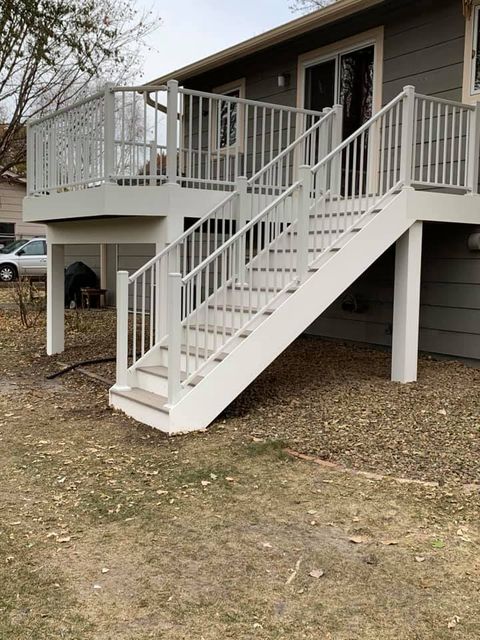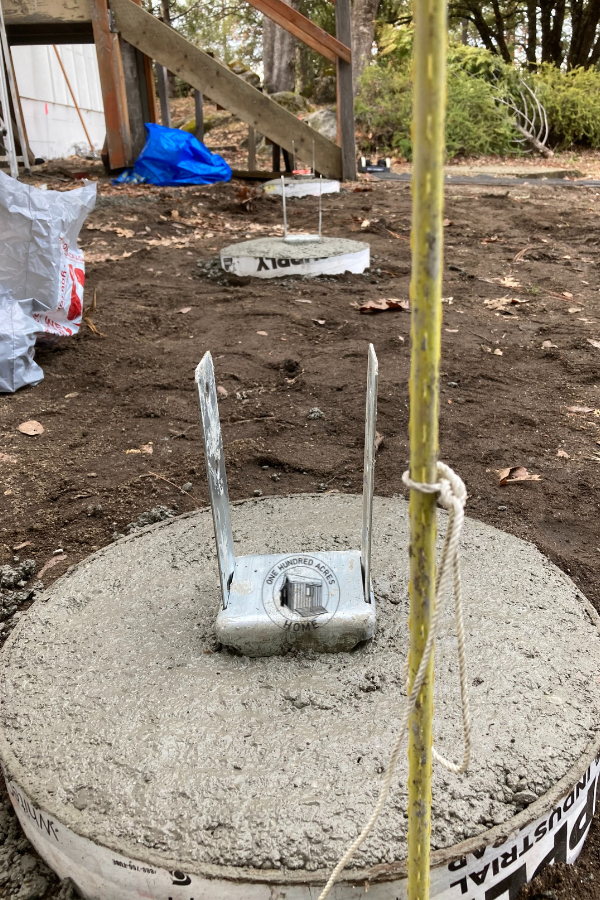A Solid Structure for Your Oasis: Checking Out the Relevance of Deck Footings in Outdoor Structures
A Solid Structure for Your Oasis: Checking Out the Relevance of Deck Footings in Outdoor Structures
Blog Article
Choosing the Right Deck Footings for Security and Sturdiness
When it concerns building a deck, among the most crucial choices you will make is choosing the appropriate footings for security and longevity. The durability and safety and security of your deck depend greatly on the sort of grounds you choose, as they offer the important support and security to endure the examination of time. With a myriad of choices available, it can be overwhelming to identify which grounds are best suited for your certain needs. In this conversation, we will check out the different sorts of deck footings, take into consideration the essential elements to consider when deciding, and dig right into the benefits and drawbacks of various options. By the end, you will have a more clear understanding of the choices available and be better outfitted to make an informed choice for your deck project.
Kinds Of Deck Grounds
These grounds are composed of a cylindrical hole filled with concrete, which offers a solid foundation for the deck messages. Concrete pier footings are fairly very easy to mount and use outstanding stability, making them a popular choice for many deck projects.
These footings are installed by screwing them right into the ground, which produces a safe foundation for the deck. They also permit for very easy adjustment and leveling of the deck if required.
Additionally, some contractors go with precast concrete footings. These grounds are made from durable concrete and can be found in numerous forms and dimensions to accommodate various deck designs. Precast concrete grounds are hassle-free to set up and give a steady base for the deck framework.
Ultimately, another alternative is the post-in-anchor footing system. This sort of footing includes driving a steel anchor right into the ground and attaching it to the deck blog post. It provides adaptability in terms of placing the deck articles and is suitable for decks with lightweight frameworks.
When choosing the ideal kind of deck ground, it is vital to think about variables such as soil problems, deck load, and regional building regulations (Deck Footings). Consulting with a specialist specialist or architectural engineer can assist make certain the appropriate footing is selected for a risk-free and secure deck
Aspects to Consider When Selecting Grounds
When picking the ideal footings for a deck, it is important to meticulously think about various aspects such as dirt problems, deck lots, and adherence to local building ordinance. These aspects play a substantial role in ensuring the stability and durability of the deck structure.
The kind of soil on which the deck will be constructed figures out the type of footings called for. On the various other hand, decks developed on clay or extensive dirts may need footings that can fit the soil's tendency to broaden and contract.
Another important factor is the deck tons. The weight of the deck, consisting of the materials used and any kind of potential live tons such as furniture or celebrations, need to be taken into account when selecting grounds. The footings must be designed to birth the weight of the deck and distribute it evenly to avoid any structural problems or failures.
Finally, adherence to neighborhood building ordinance is extremely important. Structure codes differ from area to area, and it is necessary to abide by the particular needs established by the local authorities. Deck Footings. These codes guarantee that the deck is built safely and satisfies the necessary criteria for architectural integrity and load-bearing capability
Concrete Grounds: Disadvantages and pros

Concrete footings supply several advantages and drawbacks when utilized as the foundation for a deck. On the positive side, concrete grounds supply exceptional stability and sturdiness.
An additional advantage of concrete footings is their adaptability. They can be put right into different sizes and shapes to More Bonuses accommodate various deck designs and configurations. Concrete grounds can be tailored to fit the details needs and requirements of the deck framework.
Nonetheless, there are additionally some disadvantages to making use of concrete grounds. This can boost the overall cost of the deck task and may need expert assistance.

Helical Piers Vs. Sonotubes: Which Is Much better?
In thinking about the structure alternatives for a deck, the contrast in between helical piers and sonotubes is essential in identifying the remarkable selection. Helical piers, also referred to as screw stacks, are steel shafts with helical plates connected to them. They are turned into the ground utilizing hydraulic machinery, offering a secure and resilient foundation for the deck. On the various other hand, sonotubes are cylindrical forms constructed from cardboard or fiber product that are full of concrete. They are put in an opening went into the ground and supply support for the deck.
When it involves security and longevity, helical piers have the top hand. The helical plates on the piers produce a strong hold with the soil, shifting or avoiding any kind of movement of the deck. This is specifically useful in areas with unpredictable or moving soil conditions. Sonotubes, on the various other hand, depend exclusively on the concrete filling for security, which may not supply the exact same level of stamina and resistance.
In regards to installment, helical piers are fairly much easier and faster to install compared to sonotubes. The hydraulic machinery made use of to turn the piers into the ground makes sure a fast and effective process. Sonotubes, on the various other hand, require digging openings and putting concrete, which can be time-consuming and labor-intensive.
Furthermore, helical piers are an even you can try here more versatile choice. If needed, they can be used in different dirt conditions and can be adjusted or strengthened. Sonotubes, on the various other hand, might require additional support, such as rebar, in particular soil conditions or areas with high tons needs.
Picking the Right Footings for Your Deck's Dimensions
For ideal structural honesty, it is important to very carefully select the proper footings that align with the dimensions of your deck. The dimensions of your deck, including its height, size, and size, play a considerable function in identifying the kind and dimension of footings needed.
When choosing footings for your deck, it is necessary to consider the load-bearing capacity of the dirt. The weight of the deck, incorporated with the weight of any kind of furnishings or individuals on it, puts in a considerable pressure on the footings (Deck Footings). It is vital to select footings that can properly support this weight without moving or sinking over time.
The shapes and size of the grounds ought to also be considered. Larger decks with better measurements need larger grounds to supply sufficient stability and assistance. The form of the footings, whether they are square or round, depends on the layout and design of the deck. Furthermore, the depth at which the grounds are installed should be determined based upon the frost line in your region to prevent any kind of heaving or moving due to freezing temperature levels.
Conclusion
To conclude, picking the best deck grounds is vital for making sure stability and longevity. Elements such as the kind of grounds, the deck's measurements, and the benefits and drawbacks of various choices must be thought about. Concrete grounds offer stamina and long life, however might be much more costly and lengthy to set up. Helical piers and sonotubes have their very own benefits and drawbacks. Inevitably, selecting the proper grounds for your deck's specific requirements is crucial for a lasting and successful framework.
These footings consist of a cylindrical hole filled up with concrete, which supplies a strong structure for the deck articles. Concrete pier grounds are reasonably very easy to set up and supply superb security, making them a preferred choice for many deck projects.
Precast concrete grounds are hassle-free to mount and give a secure base for the deck framework.
It supplies flexibility in terms of placing the deck articles and is appropriate for decks with light-weight structures.
Concrete footings offer several visit here benefits and drawbacks when utilized as the foundation for a deck.
Report this page